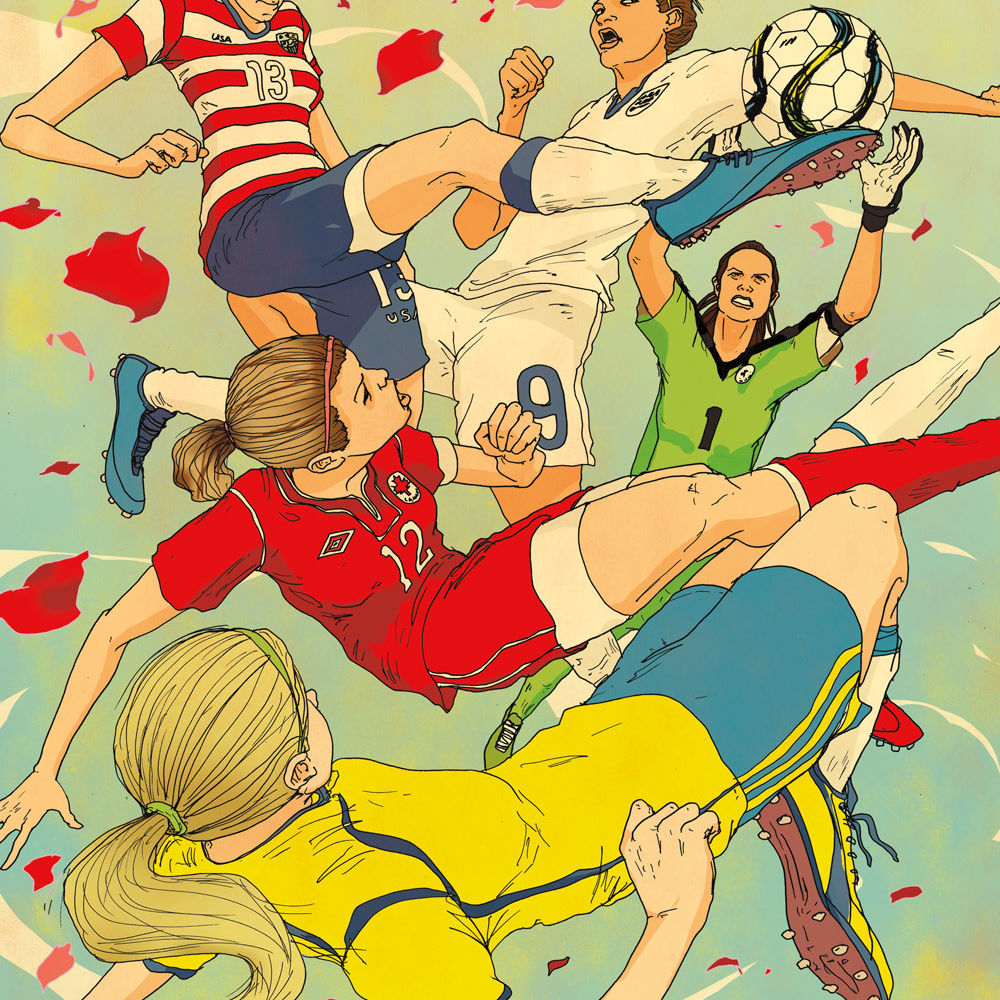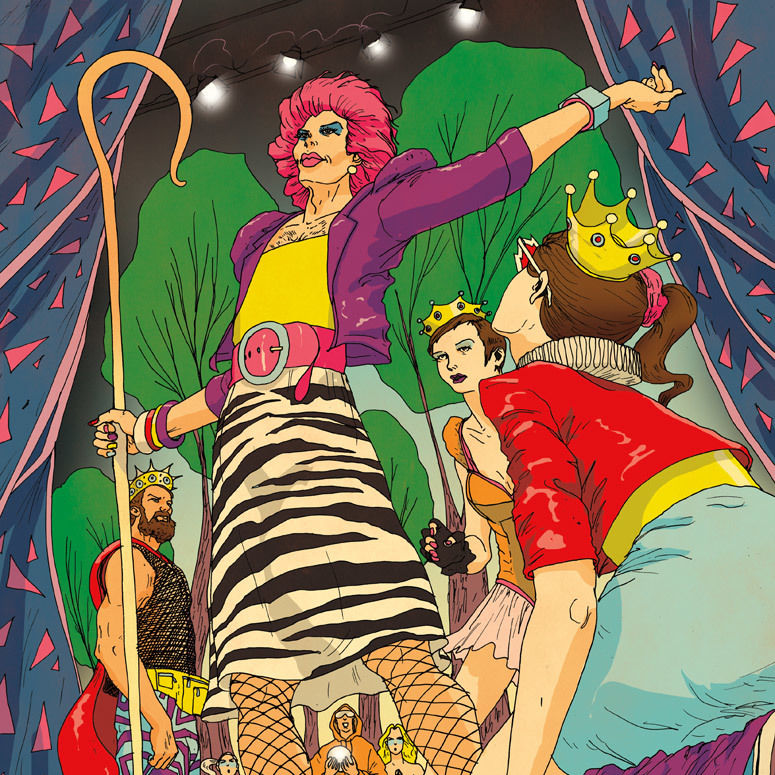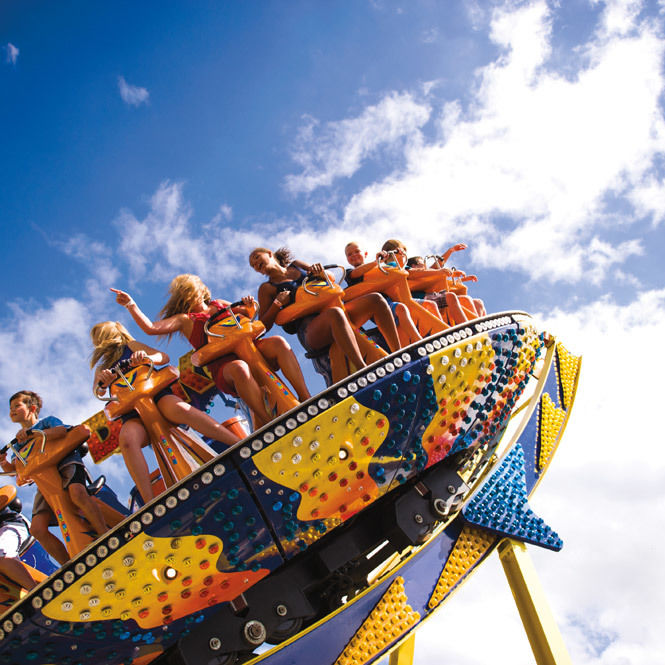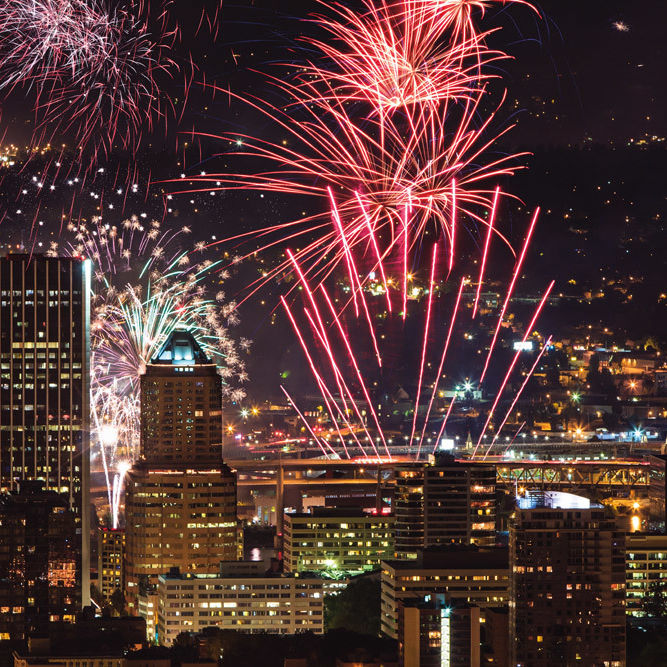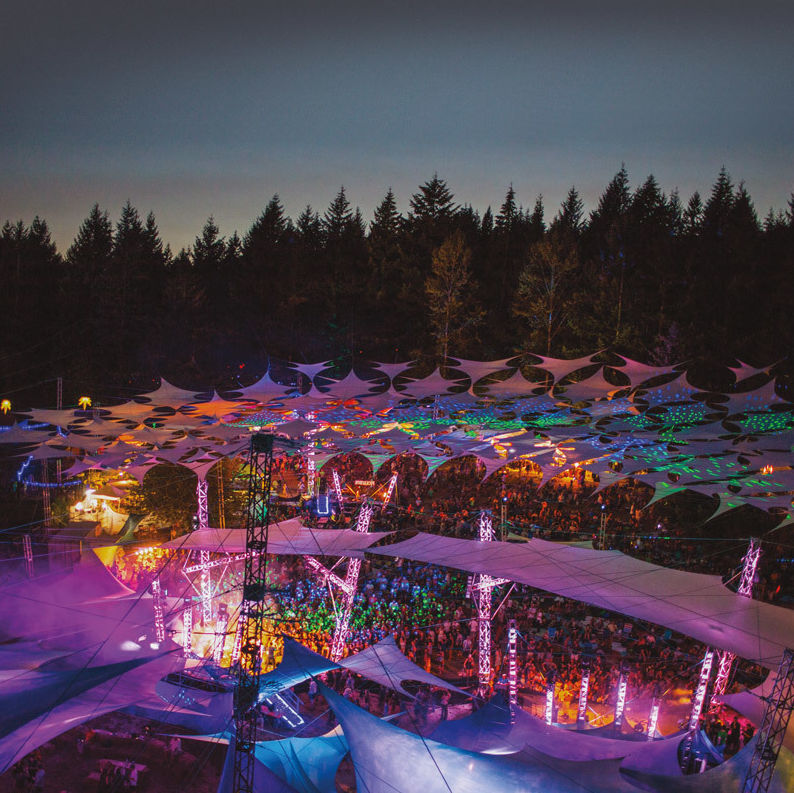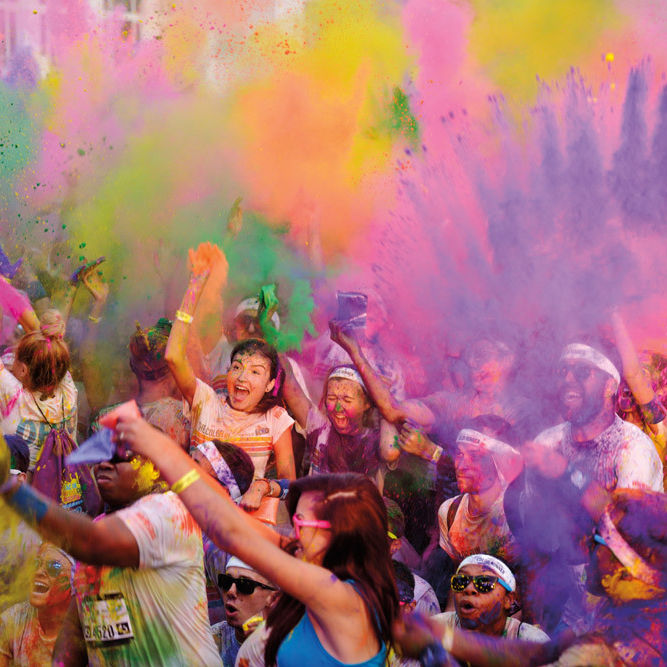Looking Back on 40 Years of Portland Pride
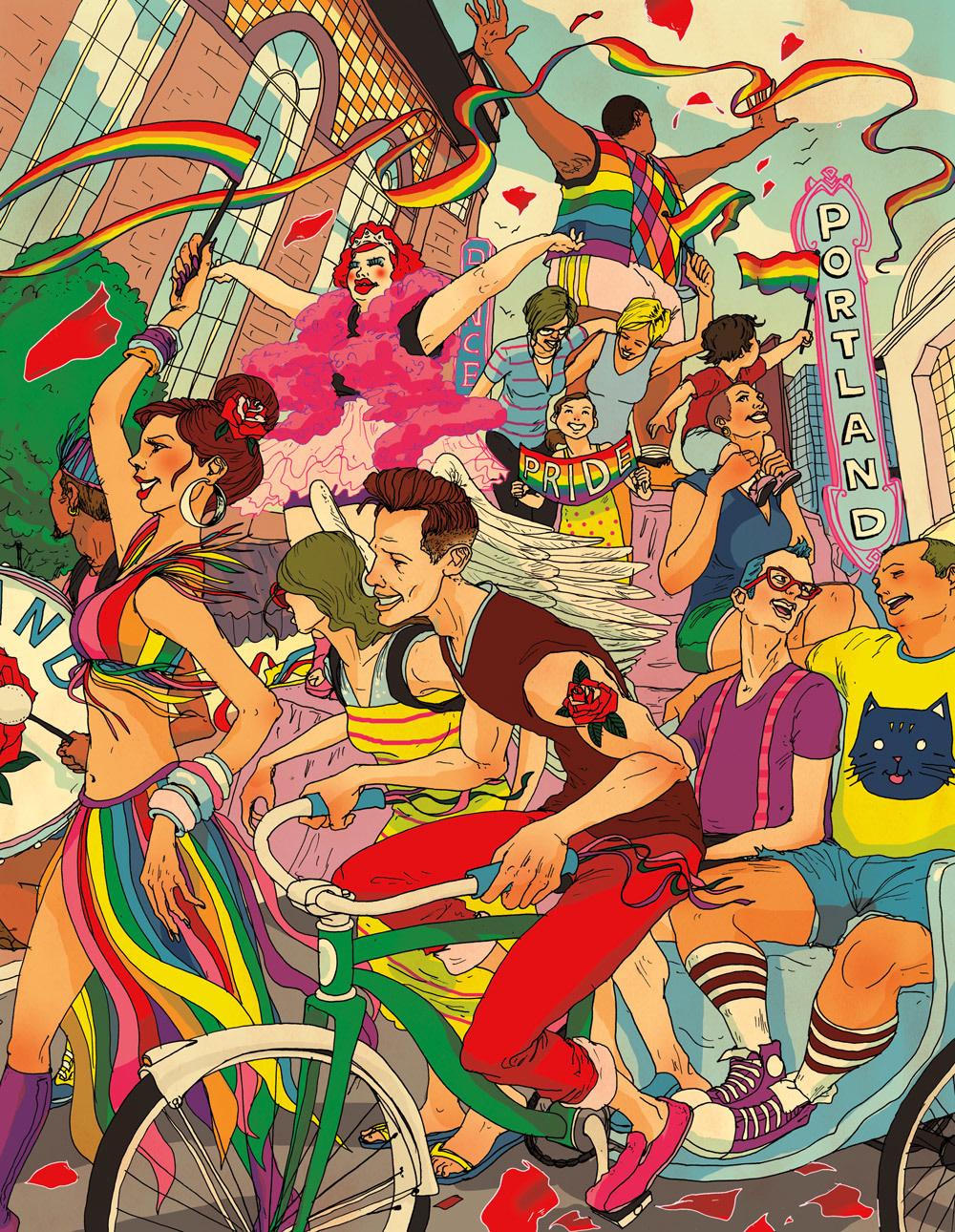
Image: Michael Byers
Forty years after a small, brave group marked the Rose City’s first public Gay Pride celebration, the Portland Pride Festival has become summer’s unofficial kickoff: a colossal street party open to all. As we approach this year’s fête (June 13–14), we look back on four colorful decades of Pride: a powerful journey toward the freedom to love and live.*
1975 About 200 people attend Portland’s first outdoor public Gay Pride celebration, in the South Park Blocks near Portland State University.
1976 Anne and Bill Shepherd and Charles and Rita Knapp launch Parents of Gays (POG), later to become the Portland chapter of Parents and Friends of Lesbians and Gays (PFLAG) Portland. They set up a table at the Gay Pride rally.
1976 Lesbian activist Kathleen Saadat organizes Portland’s first Gay Pride march.
1977 Portland Mayor Neil Goldschmidt issues a proclamation for Gay Pride Day.
1980 Mark Richards, Mark Jones, and Gary Coleman form the Portland Gay Men’s Chorus, which performs its first concert at Pride.
1982 Portlanders Terry Bean, Jerry Weller, John Baker, Keeston Lowery, and Dana Weinstein start a new political fundraising organization called Right to Privacy (later called Right to Pride).
1983 Two years after the first reported case of AIDS in Oregon, Reese House, Brown MacDonald, and others form Cascade AIDS Project (CAP) to support gay and bisexual men affected by HIV and AIDS.
1983 Just Out publishes its first issue.
1984 Bud Clark, a strong straight ally of the gay community, is elected mayor. He campaigns and celebrates at the Dirty Duck, a gay bar.
1985 Newly elected Oregon Secretary of State Barbara Roberts requests the Portland Gay Men’s Chorus sing at her inauguration.
1987 Lady Elaine Peacock hosts the first of many “Peacock in the Park” drag pageants in Washington Park. The event raises money for Audria M. Edwards Youth Scholarship Fund.
1989 The first LGBT-sponsored float appears in the Rose Festival’s Starlight Parade.
1991 Gail Shibley becomes the first openly gay person to serve in the Oregon House of Representatives.
1992 Conservative Christian political organization the Oregon Citizens Alliance (OCA) sponsors Measure 9, the first of many initiatives to amend the Oregon Constitution to prevent “special rights” for homosexuals and bisexuals. The measure fails, and groups formed in opposition become the basis for the next two decades of the state’s LGBT rights movement.
1994 Portland’s Lesbian Avengers stage the city’s first-ever Dyke March.
1996 Basic Rights Oregon (BRO) is incorporated after evolving from an organization that formed to oppose Measure 13, another anti-LGBT ballot measure promoted by the OCA.
1996 Chastity Bono serves as the Pride parade’s grand marshal.
1998 In Tanner v. OHSU, the Oregon Court of Appeals rules that all state and local governments must offer spousal benefits to same-sex domestic partners. (The ruling also prohibits private employers from discriminating on the basis of sexual orientation in hiring,
firing, and pay.)
2003 Rives Kistler is appointed to the Oregon Supreme Court, becoming the first openly gay state supreme court justice in the United States.
2004 The Defense of Marriage Coalition’s Measure 36 passes, amending the Oregon Constitution with the following text: “It is the policy of Oregon, and its political subdivisions, that only a marriage between one man and one woman shall be valid or legally recognized as a marriage.”
2004 Sam Adams is elected to Portland City Council. He is the first openly gay person elected to a public office of the City of Portland.
2005 A group of community activists, including Adams, help to incorporate the LGBTQ Community Center Fund—now known as Q Center—to provide a safe space to support and celebrate LGBT diversity,
equity, and visibility.
2008 Democrat Kate Brown, who identifies as bisexual, is elected Oregon Secretary of State.
2008 Adams is elected mayor of Portland, making Portland the largest city up to that time to elect an openly gay mayor.
2008 Stu Rasmussen, who is transgender, is elected mayor of nearby Silverton, Oregon.
2009 PFLAG Portland Black Chapter becomes the first PFLAG chapter in the country created by and for the black/African American community.
2012 Oregon Representative Tina Kotek becomes Speaker of the House—the first openly lesbian leader of a state legislative chamber anywhere in the US.
2013 Gov. John Kitzhaber signs House Bill 2093, making Oregon one of a handful of states to remove the surgery requirement for transgender Oregonians seeking a change on their birth certificate.
2013 The Portland Thorns, Timbers, and Trail Blazers make history by becoming the first major pro sports teams to endorse a campaign for the freedom to marry.
2014 The Pride Festival hosts its first official Portland Trans March.
2014 US District Court Judge Michael McShane issues his decision in consolidated case Geiger v. Kitzhaber, ruling that Oregon’s 2004 ban on same-sex marriage is unconstitutional—the same day, plaintiffs Deanna Geiger and Janine Nelson become the first same-sex couple to wed with the court’s backing in Oregon.
2015 Kate Brown becomes Oregon’s second female governor, and the first openly bisexual governor in US history.
*This timeline is largely drawn from the work of the Gay & Lesbian Archives of the Pacific Northwest (GLAPN), housed at the Oregon Historical Society and glapn.org.
Did we miss anything? Please help us add to our timeline in the comments below!

